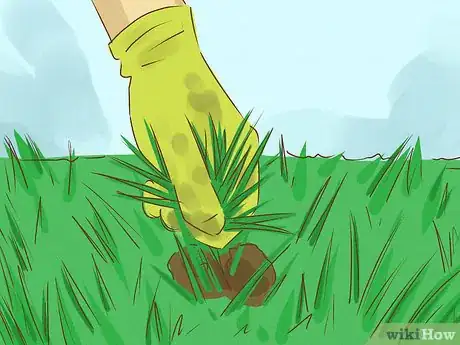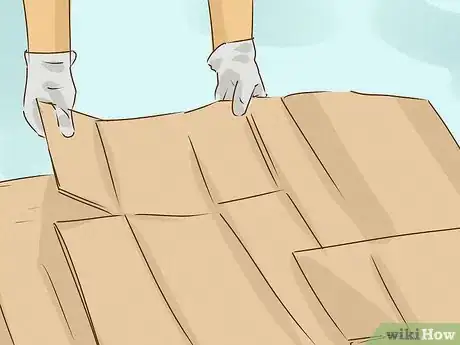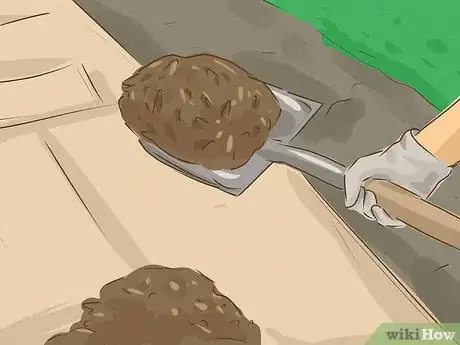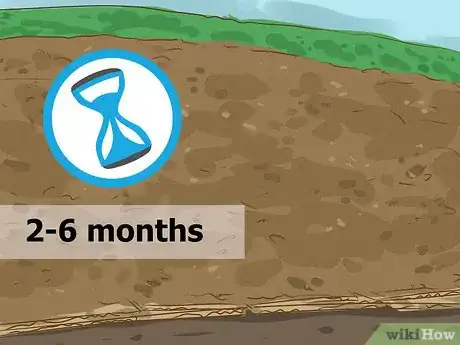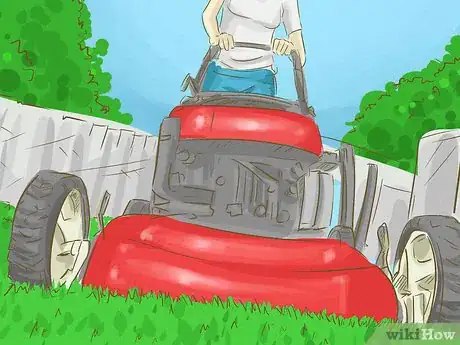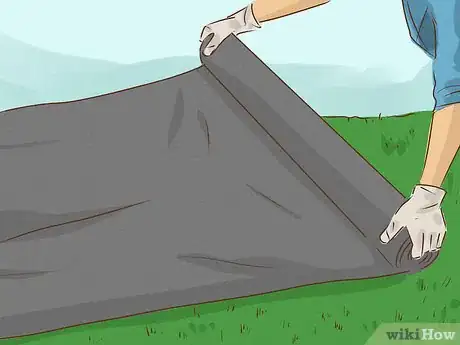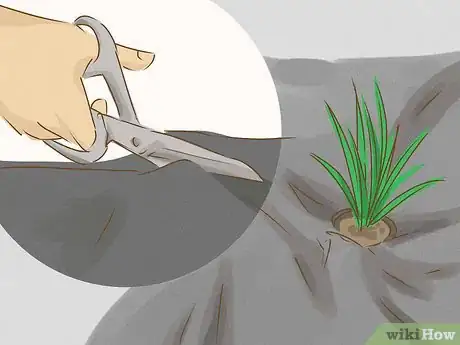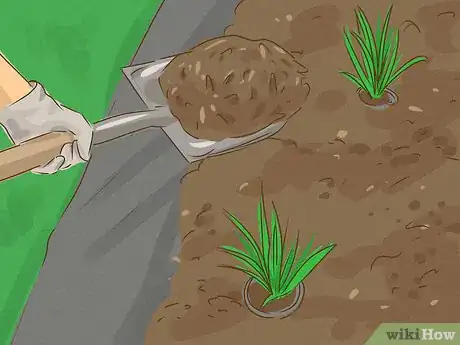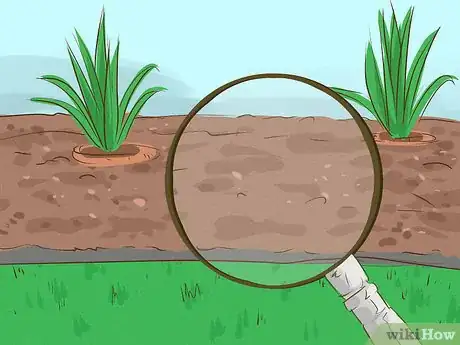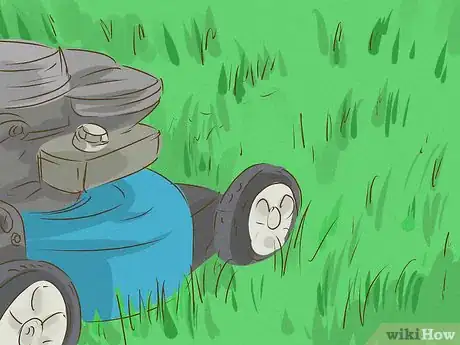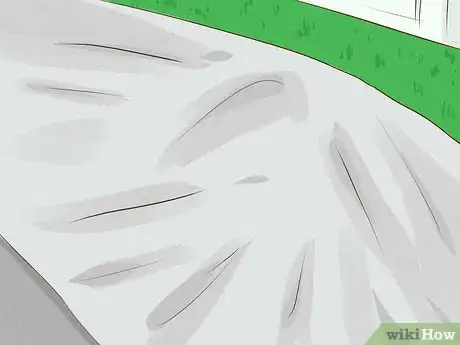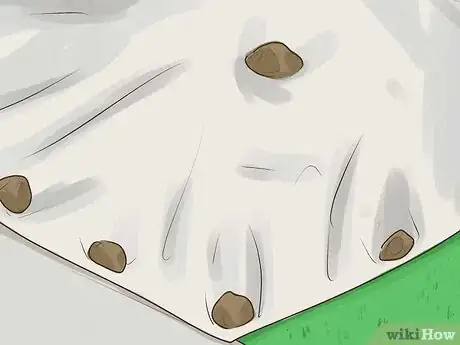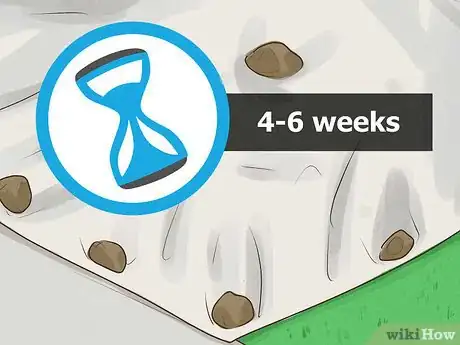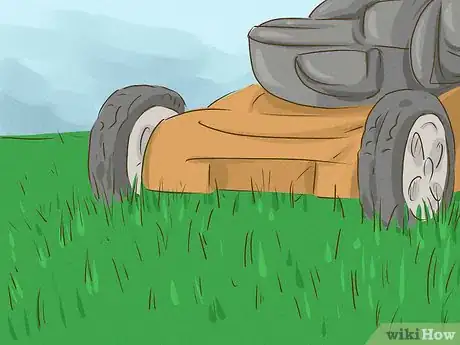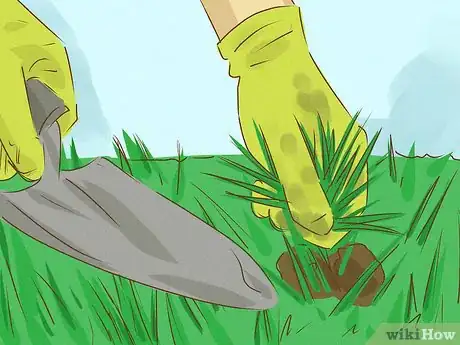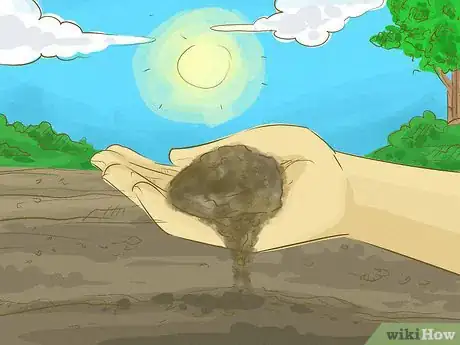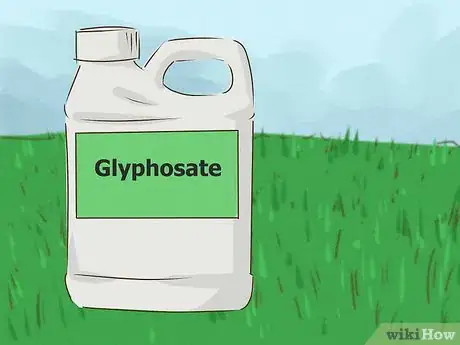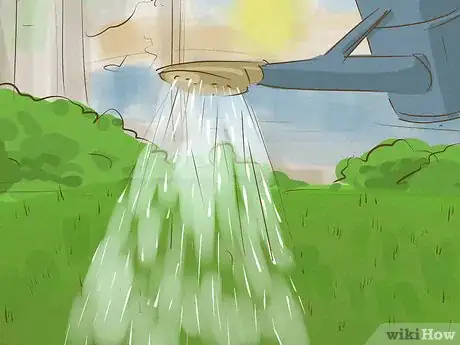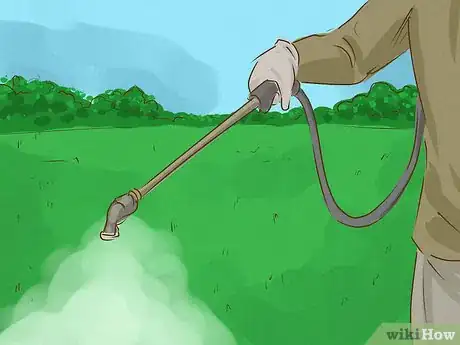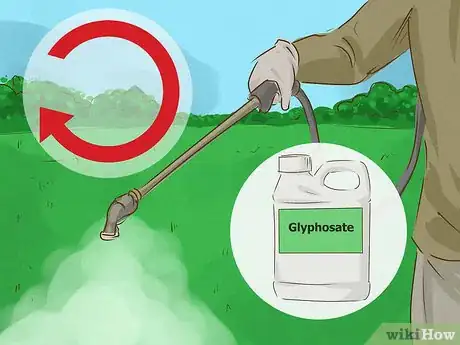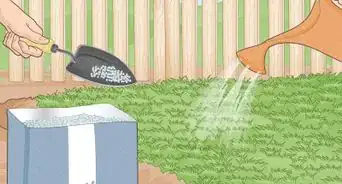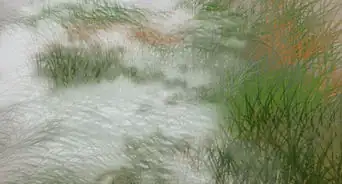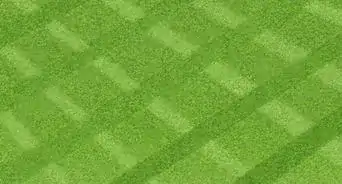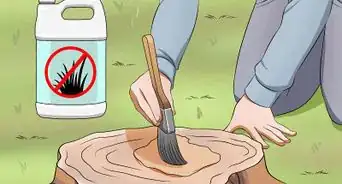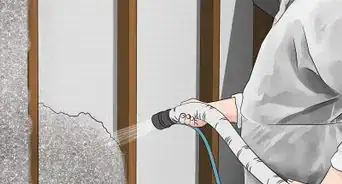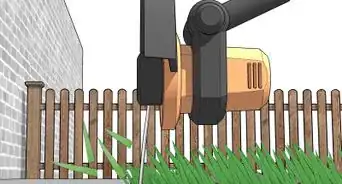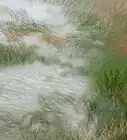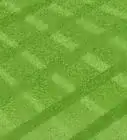This article was co-authored by Lauren Kurtz. Lauren Kurtz is a Naturalist and Horticultural Specialist. Lauren has worked for Aurora, Colorado managing the Water-Wise Garden at Aurora Municipal Center for the Water Conservation Department. She earned a BA in Environmental and Sustainability Studies from Western Michigan University in 2014.
There are 12 references cited in this article, which can be found at the bottom of the page.
This article has been viewed 87,683 times.
Bermuda grass, also known as devil’s grass, couch grass, and dog’s tooth grass, is an invasive species of grass common in many parts of the world. If allowed to grow unchecked, Bermuda grass can take over in no time. The secret to stopping it in its tracks is to completely eradicate the fast-spreading root system. One of the most effective ways to accomplish this is by spraying it with a powerful herbicide like glyphosate until it turns brown and begins to die off. If you’d rather not resort to using harsh chemicals on your lawn, try smothering the grass with a layer of cardboard and mulch, burning it out through solarization, or simply stripping it by hand.
Please note: The WHO considers glyphosate to be a probable human carcinogen. Its use is prohibited in some states and countries. Please check with your local laws and use caution if handling this chemical.
Steps
Smothering the Root System with Cardboard
-
1Pull up the heaviest growth by hand. Before you can choke out the creeping grass, you’ll need to remove as much as possible from the affected area. Grab a handful of leaves near the soil and pull them up firmly until you dislodge the underlying root system. Clearing the ground will give you a head start over new growth, making your cover more effective.[1]
- Use a leaf bag or wheelbarrow to dispose of the stripped Bermuda grass to prevent spreading small pieces to other parts of your lawn. You should throw it in the trash rather than the compost in order to prevent it from spreading.
- If you don't want to hand pull the grass, you could try mowing the lawn very short, which will help.
-
2Cover the bare patch with 2-3 layers of cardboard. The cardboard acts as an insulator to keep the root system cut off from sunlight, moisture, and nutrients. For the kind of growth that pops up on most lawns, 2 stacked sheets ought to be enough. If you have a serious overgrowth problem, it may be necessary to use 3 layers.[2]
- Most home improvement centers sell parcels of cut cardboard for a few dollars apiece. For a more economical alternative, look for boxes that have been thrown out or recycled.
- Overlap the edges of each section to keep new grass from popping up between the cardboard.
- If you don't have cardboard, you could use several layers of wet newspaper instead.
- You might also have success using landscaping fabric in place of cardboard to achieve the same effect in areas with sparse ground cover.[3]
Advertisement -
3Shovel mulch on top of the cardboard. Pile the mulch about 5-6” thick. That way, you’ll still be able to plant smaller flowers and shrubs without having to risk exposing the root system of the Bermuda grass. Once the mulch is in place, tamp it down lightly with the flat edge of a shovel or trowel to compact it.[4]
- Any conventional gardening mulch will do, or go with an all-organic mixture of arborist’s waste and compost.
-
4Allow up to 2-6 months for the cover to finish off the roots. In the meantime, avoid disturbing either the mulch or the underlying cardboard as much as possible. After an extended time without water, sunlight, and nutrients, the Bermuda grass will no longer be able to survive.[5]
- Light cover will typically be wiped out within a couple months—thicker patches may require a little more patience.[6]
- If you want to see how the buffer is working, dig down to a small section of the cardboard and peel it back so you can take a peek underneath.
Choking out Bermuda Grass with Landscaping Fabric
-
1Remove as much grass as you can. Mow the Bermuda grass down close to the ground, or pull out small sections by hand. Doing away with the bulk of the grass slows its growth considerably, giving the landscaping fabric the time it needs to be effective.[7]
- Shorter grass is less likely to cause uneven bunching beneath the fabric, as well.
-
2Place a sheet of landscaping fabric over the affected area. Unroll the sheet and stretch it out over the part of your lawn or flowerbed where growth is heaviest. Make sure the sheet is lying smooth and flat. Landscaping fabric is the best ground cover option for broad areas where Bermuda grass is coming in thick.[8]
- Cut the sheet as needed to fit better over narrow or oddly-shaped areas.
- Be careful not to tear, wrinkle, or damage the landscaping fabric in any way while you're handling it.[9]
-
3Cut holes in the landscaping fabric to make room for your plants. Use a pair of scissors or a utility knife to open up the fabric enough to accommodate whatever you may already have growing. If you think you might want to add new plants in the future, wait until you're actually ready to plant to make holes for them. This reduces the number of places where new grass might come up.[10]
- Don't make the holes any bigger than they need to be to fit around your plants. If you do, you may soon discover that new Bermuda grass has sprouted in the intervening space.
- Only cut holes for shrubs and other perennials. Caring for annuals forces you to remove the landscaping fabric too frequently.
-
4Cover the landscaping fabric with a layer of mulch. Spread the mulch 4–6 inches (10–15 cm) thick. This should be deep enough to allow you to plant new additions later. Leave 2–3 inches (5.1–7.6 cm) around the base of your plants to avoid crowding the roots and stem structures.[11]
- Select a mulch mixture that contains the moisture and nutrients your existing plants need to flourish.
-
5Inspect the area around the fabric periodically for new grass. The dense material will stifle the underlying root growth within about 6-8 weeks. In the meantime, keep an eye on the edges and openings to make sure no new grass has found its way through. Strip any stray leaves you happen to come across manually.[12]
- Landscaping fabric is a quicker alternative to cardboard-and-mulch ground cover. However, it can create more opportunities for stubborn grass to continue spreading if not correctly installed and maintained.
- You should not plant a lawn over landscaping fabric.
Solarizing Bermuda Grass
-
1Mow the Bermuda grass. Clip the grass just above the level of the soil to remove as much growth as possible. The less you have to contend with starting off, the easier it will be to knock out.[13]
- Hand-strip or run a weedeater over narrow sections where a lawnmower won’t fit.
- This method tends to work best in the summertime, or in regions with hot, dry climates that receive an abundance of direct sunlight.
-
2Stretch a sheet of clear plastic over the overgrown patches. Lay the plastic flat over the affected area, making sure there are no wrinkles or creases. The transparent plastic will magnify the sun’s rays, harnessing its heat to literally burn out the thriving grass. For larger areas, it may be necessary to use multiple overlapping sheets.[14]
- If necessary, cut the sheeting to the correct size and shape to fit the part of your lawn overrun by the Bermuda grass.
- Gardeners and landscaping specialists often referred to the process of using concentrated UV light to wipe out invasive species as “solarization.”[15]
-
3Secure the perimeter of the plastic. Tack down the loose edges with metal gardening stakes, or place heavy stones along the length every few feet. When the plastic is properly anchored, you won’t have to worry about scavenging animals or sudden gusts of wind pulling it up.
- To make doubly sure the plastic stays put, bury the edges under 3–4 inches (7.6–10.2 cm) of topsoil.[16]
-
4Leave the plastic in place for 4-6 weeks. Every day, the intense heat and light will fry the grass a little more. The remaining leaves dry out and turn brittle, eventually leading to the death of the entire root system. All you have to do is carry on with your gardening as usual and make sure the plastic isn’t damaged or loosened.[17]
- One benefit of using a plastic cover is that you’ll be able to monitor its progress without having to temporarily remove it.
Removing Bermuda Grass by Hand
-
1Mow the grass. You may have to go over the heaviest growth a few times to prepare them for excavation. Clearing away overgrown areas beforehand makes it easier to get at the roots without losing an excessive amount of soil.
-
2Dig out the grass below the root. Use a hand trowel to agitate the soil well below root level. Then, pull out the entire root structure in one piece—it should give way with little resistance. Throw the uprooted clumps into a plastic leaf bag or wheelbarrow to keep it away from the ground.[18]
- Any live roots you miss may find their way back into the loose soil and start the problem up all over again.
- If you’re worried about losing precious soil, place the clumps on a tarp to dry in the sun for a full day, then shake off the soil clinging to the roots and return it to your garden.[19]
-
3Sift the soil beneath the grass to eliminate the remaining roots. Inspect the turned soil closely for any root or leaf fragments that may have been left behind. Pick these out by hand whenever you come across them. Make sure there are no visible traces left when you're done.[20]
- Keep a close watch on your lawn or garden in the coming weeks to look for signs that a new crop of Bermuda grass might be replacing the old.[21]
- Digging out a sea of Bermuda grass one handful at a time can be tedious, but it’s one of the most meticulous and cost-effective ways to guarantee that you’ve gotten rid of it for good.
Applying a Chemical Herbicide
-
1Purchase some glyphosate. Glyphosate, an active ingredients in weed killers like Roundup, is a popular choice for halting the spread of invasive ground covers like Bermuda grass. Look for the herbicide at your local gardening store or home improvement center. It is typically sold as a spray, making it easy to coat an entire section of the lawn with relative ease.[22]
- Keep in mind that glyphosate is not a selective herbicide—this means that it's harmful to any type of plant it comes into contact with, not just weed-like species like Bermuda grass.
- Remember that glyphosate is toxic, so you should use it with care. Make sure that you follow all of the instructions on the label and wear protective equipment.
-
2Water your lawn thoroughly 1-2 weeks before applying the herbicide. Sweep a garden hose on low pressure over the Bermuda grass twice a day for just long enough to wet it. A good watering helps the leaves grow green and lush. This is desirable because chemical herbicides are often absorbed through the leaves rather than the roots.[23]
- If you use a sprinkler system for irrigation, set it to douse the grass in regular intervals.
- The best time to use herbicides to beat back belligerent Bermuda grass is during the spring and summer months, when the leaves are readily soaking up the most nutrients.
-
3Spray the Bermuda grass with the glyphosate. Coat the affected area evenly with a heavy misting of the herbicide. As it soaks into the leaves, it will begin to break down the enzymes the Bermuda grass relies on to grow. Allow the grass to dry naturally, and avoid mowing or irrigating for the next several days.[24]
- Follow the instructions on the label carefully to make sure you’re deploying the chemical safely and correctly.[25]
- It’s a good idea to wear gloves and a strap on a facemask or respirator to protect your airways when working with glyphosate.
-
4Repeat as many times as needed until the grass dies off. Bermuda grass is a particularly persistent and resilient species, which means one round of herbicide will rarely do the trick. Continue treating your lawn once a week to combat the grass’s ability to spread. You may need to repeat the process up to 5 times to neutralize it completely.[26]
- Look for Bermuda grass to dry out and begin turning brown as it dies.
- Be sure to survey other places nearby where Bermuda grass may be growing unseen.
- Keep in mind that using herbicides will make it difficult for future plantings to thrive. It's best to wait at least 2 months before planting anything in treated soil.
Community Q&A
-
QuestionHow do I destroy Bermuda grass permanently?
 NinoxTop AnswererThe best method is mechanical: dig the soil with a plow or a garden fork in the spring, then a harrow or a hoe. Repeat if possible in the summer. If there are sprouts the next year, you need to start again.
NinoxTop AnswererThe best method is mechanical: dig the soil with a plow or a garden fork in the spring, then a harrow or a hoe. Repeat if possible in the summer. If there are sprouts the next year, you need to start again.
Warnings
- Even after Bermuda grass is removed, spores from nearby patches can easily re-seed the cleared section. This means that it may be necessary to keep clearing areas over time before the grass is completely eliminated.⧼thumbs_response⧽
References
- ↑ https://www.sunset.com/garden/earth-friendly/how-to-remove-bermuda-grass
- ↑ https://nativesanctuary.wordpress.com/2009/10/11/cardboarding-your-bermuda-lawn/
- ↑ https://www.sunset.com/garden/earth-friendly/how-to-remove-bermuda-grass
- ↑ https://www.sunset.com/garden/earth-friendly/how-to-remove-bermuda-grass
- ↑ https://nativesanctuary.wordpress.com/2009/10/11/cardboarding-your-bermuda-lawn/
- ↑ https://www.sunset.com/garden/earth-friendly/how-to-remove-bermuda-grass
- ↑ https://www.sunset.com/garden/earth-friendly/how-to-remove-bermuda-grass
- ↑ http://www.texasgardener.com/pastissues/mayjun06/weedwars.html
- ↑ http://northcoastgardening.com/2010/10/how-to-use-landscape-fabric/
- ↑ http://northcoastgardening.com/2010/10/how-to-use-landscape-fabric/
- ↑ https://www.sunset.com/garden/earth-friendly/how-to-remove-bermuda-grass
- ↑ http://ipm.ucanr.edu/PMG/PESTNOTES/pn7453.html
- ↑ https://www.sunset.com/garden/earth-friendly/how-to-remove-bermuda-grass
- ↑ http://ucanr.edu/sites/YCMG/files/187332.pdf
- ↑ https://www.gardensalive.com/product/can-you-solarize-garden-woes-away
- ↑ http://ucanr.edu/sites/YCMG/files/187332.pdf
- ↑ http://ipm.ucanr.edu/PMG/PESTNOTES/pn7453.html
- ↑ https://www.urbanfoodgarden.org/main/vegetable-patch-management/weeding---vegetable-patch-management/weeding---remove-couch.htm
- ↑ https://www.sunset.com/garden/earth-friendly/how-to-remove-bermuda-grass
- ↑ https://www.sunset.com/garden/earth-friendly/how-to-remove-bermuda-grass
- ↑ https://www.urbanfoodgarden.org/main/vegetable-patch-management/weeding---vegetable-patch-management/weeding---remove-couch.htm
- ↑ http://npic.orst.edu/factsheets/glyphogen.html#products
- ↑ https://www.bermuda-attractions.com/bermuda_0000fe.htm
- ↑ http://www.garden-counselor-lawn-care.com/kill-bermuda-grass.html
- ↑ http://npic.orst.edu/factsheets/glyphogen.html
- ↑ https://www.sunset.com/garden/earth-friendly/how-to-remove-bermuda-grass
About This Article
To kill Bermuda grass, start by mowing the grass so it's easier to get at the roots. Then, use a hand trowel to dig into the grass below the root level. Once you've gone under the root with the trowel, pull out the clump of grass with the root attached, and toss it in a bag. When you're finished pulling out all of the grass, sift through the soil to make sure there aren't any remaining roots. For large patches of Bermuda grass, you may want to smother the grass with cardboard and mulch instead. For more tips from our Horticulture co-author, like how to kill Bermuda grass using an herbicide, read on!
